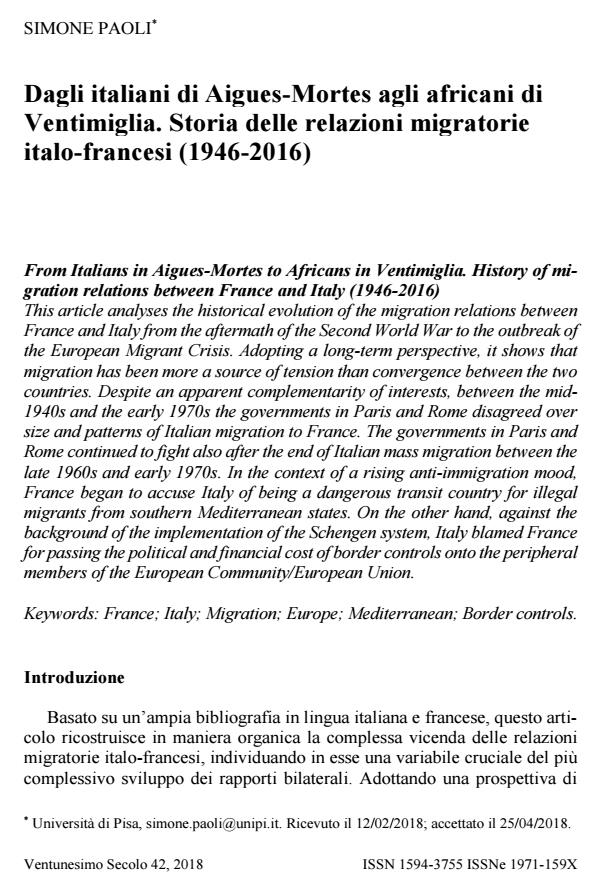From Italians in Aigues-Mortes to Africans in Ventimiglia. History of migration relations between France and Italy (1946-2016)
Journal title VENTUNESIMO SECOLO
Author/s Simone Paoli
Publishing Year 2018 Issue 2018/42
Language Italian Pages 19 P. 201-219 File size 331 KB
DOI 10.3280/XXI2018-042012
DOI is like a bar code for intellectual property: to have more infomation
click here
Below, you can see the article first page
If you want to buy this article in PDF format, you can do it, following the instructions to buy download credits

FrancoAngeli is member of Publishers International Linking Association, Inc (PILA), a not-for-profit association which run the CrossRef service enabling links to and from online scholarly content.
This article analyses the historical evolution of the migration relations between France and Italy from the aftermath of the Second World War to the outbreak of the European Migrant Crisis. Adopting a long-term perspective, it shows that migration has been more a source of tension than convergence between the two countries. Despite an apparent complementarity of interests, between the mid- 1940s and the early 1970s the governments in Paris and Rome disagreed over size and patterns of Italian migration to France. The governments in Paris and Rome continued to fight also after the end of Italian mass migration between the late 1960s and early 1970s. In the context of a rising anti-immigration mood, France began to accuse Italy of being a dangerous transit country for illegal migrants from southern Mediterranean states. On the other hand, against the background of the implementation of the Schengen system, Italy blamed France for passing the political and financial cost of border controls onto the peripheral members of the European Community/European Union.
Keywords: France; Italy; Migration; Europe; Mediterranean; Border controls.
Simone Paoli, Dagli italiani di Aigues-Mortes agli africani di Ventimiglia. Storia delle relazioni migratorie italo-francesi (1946-2016) in "VENTUNESIMO SECOLO" 42/2018, pp 201-219, DOI: 10.3280/XXI2018-042012